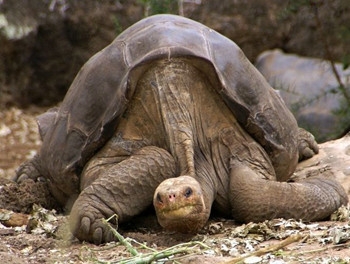
It's likely giant ground sloths used their claws in a similiar way to hook branches and pull them within reach. Like tree sloths, they were vegetarians and probably not fussy about what they ate, chewing their way through leaves, fruits, twigs and all. The big difference between the two is their size. Giant ground sloths were 500 times bigger than their modern relatives. And standing up right on their back legs, they towered as tall as a giraffe.
可能巨型地懶也像樹懶一樣用他們的瓜子來抓住樹枝,并在能夠觸及的范圍內探索食物,他們都是素食主義者,可能他們對于食物都不挑剔。一路上他們吃著樹葉、水果、小樹枝等一切能吃的東西。而這兩種動物最大的不同則是他們的體型。巨型地懶的體型比他們的現代親戚大500倍,要是他們用后退站立起來的話,他們有長頸鹿那么高。
So far we have pieced together something of the people who first explored the southeast of the continent and the wildlife they must have encountered and hunted. But what about the climate and the landscape they all lived in?
到目前為止,我們已經把過去的一些痕跡搜集到了一起,他們包括第一批來探索這片大陸東南部的人類以及那些他們一定遇到過或是捕殺過的動物。但是他們居住地方的氣候和景色有事什么樣呢?
Florida is tropical today, but how warm was it 13,000 years ago? This is Little Salt Spring in central Florida, the source of one of the most unlikely clues to the climate of the past. Brought up from a ledge more than 20 metres below the surface was the fossilized shell of a tortoise, a giant tortoise, much like this one. Giant tortoises are now only found basking in the heat of a few islands along the equator.
佛羅里達現在屬于熱帶地區,但是在13000年前,那里的溫度如何?這是坐落于佛羅里達中部的小鹽溫泉,在這里存在著一個有關佛羅里達過去氣候的線索,但是這條線索似乎不太可能。在地下20多米深的暗礁里,有一個烏龜殼的化石,這是一種大型龜——很像巨型陸龜。現在,只有在赤道附近的一些島嶼上,我們可以看到巨型陸龜享受著日光。
英文文本來自普特英語,譯文屬可可原創,僅供學習交流使用,未經許可不得轉載.











